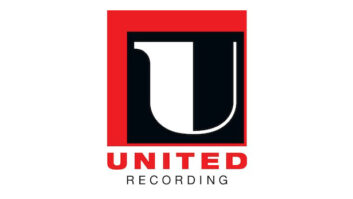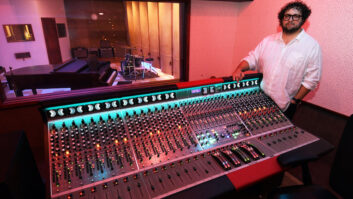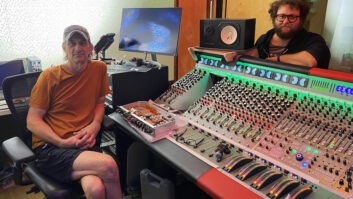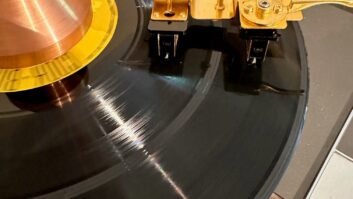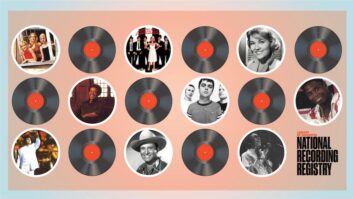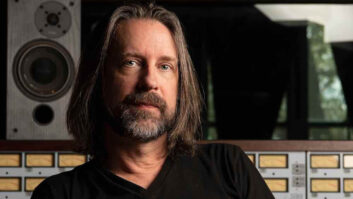Once upon a time, orchestras were recorded using two or three
microphones. No mixing was ever done after the fact, so the entire
production hinged on the performance, the choice and placement of the
microphones, and the quality of the recording medium.
These days, orchestral recording takes almost as many forms as pop
recording, with spot mics, multichannel arrays, post-production and
editing among the techniques employed to deliver the final product to
the home. In most cases, the object is the same: to convey as realistic
a sonic image of the orchestra as possible. However, the means by which
producers, engineers and label owners arrive at their final goal vary
widely.
At one end of the spectrum, producers such as Michael Hobson of
Classic Records and Tam Henderson of Reference Recordings rely on
simple mic setups to capture live orchestras playing classical
repertoire. Their use of spot mics is limited, as is their
after-the-fact alteration of their recordings. For all practical
purposes, they are what the industry labels “purists.”
“As far as I’m concerned, classical music in a concert hall is what
it is,” says Classic’s Hobson, who recently produced the Moscow State
Symphony Orchestra’s performance of Shostakovich’s Fifth Symphony and
Rimsky-Korsakov’s Scheherazade for release next year on DVD-Audio.
“It’s inherently an acoustic event, unamplified, except for some
20th-century composers who use amplification as part of their work. I’m
not a fan of classical records that have 40 or 50 mics and everything
microscopically recorded and massively mixed.”
At the other extreme, producers Kurt Munkacsi and Michael
Riesman—who are best known as the recording team behind
contemporary composer Philip Glass—break all the rules of
classical music. They use click tracks and headphones and capture the
orchestra section by section rather than as an ensemble. Furthermore,
they approach the mixing process the way a pop producer would—as
an art unto itself, almost separate from the recording of the music.
And the Munkacsis and Riesmans of the world don’t even pretend to
render realistic sonic tableaux of the performances they produce. They
are admittedly in the business of creating their own aural
landscapes.
“The true classical recordist is making a sonic photograph, and
they’re not even using a multitrack machine. They’re using a stereo
pair of microphones and catching the true performance,” says Munkacsi.
“There’s something to be said for that. But that’s a different kind of
artistic expression from what we do. In a traditional environment, the
piece of music has to be conceived for live performance. You can’t say,
`This flute is going to solo over an entire orchestra,’ but Philip has
the freedom to say, `Okay, I want everyone to hear the solo flute, even
though the orchestra’s playing full-out.’ We can make music that can’t
be performed live.”
In between the purists like Hobson and Henderson, and the mavericks
like Munkacsi and Riesman, are realists who render live-sounding
documents of orchestral performances but employ tactics often reserved
to the pop producers. For instance, Steve Smith of Seattle’s Music
Works Studios (formerly Xtreme Studios) uses extensive microphone
setups and post-production processing in his work, which consists
almost exclusively of orchestral recordings for soundtracks. His
credits include the sci-fi epic Battlefield Earth (featuring
John Travolta), the IMAX extravaganza Everest and the recent
thriller The Art of War, starring Wesley Snipes and Donald
Sutherland.
“All my stuff is soundtrack-oriented,” says Smith. “It’s different
from a classical orchestra in that the composers always want some sort
of after-the-fact control over the balance. That’s why we have spot
mics.”
Smith’s setup varies from project to project, but typically he uses
a Decca Tree—three omni mics arranged in a triangular pattern,
with the center mic forward of the left and right
ones—supplemented by various additional mics. For the main mics,
Smith tends to use a set of Schoeps CMC-6s that he acquired from Wes
Dooley at Audio Engineering Associates. To convey more width, Smith
employs pairs of B&K 4003 omnis in the front and back of the hall.
Closer to the source, Smith might use Neumann KM184s on the first and
second violins, Neumann TLM193s on the violas, Soundelux U95s on the
basses, Royer ribbon mics on the woodwinds and low brass, a single
Neumann TLM170 on the trumpet, and a pair of Audio-Technica 4050s on
the French horns. On a recent production, Smith miked the percussion
with a TLM170 over the timpani, a pair of AKG 460s on the mallet
percussion, and another TLM170 on a low bass drum that was used for a
special effect. Ultimately, Smith uses the spot mic signals only
sparingly in the mix. “You try to get everything off the main mics, but
if the composer says, `I want some more first violins,’ you’ve gotta be
able to do it,” he says.
FORMATS
From the standpoint of recording formats, the choices are much broader
than they were even a few years ago, when producers faced a simple
decision between analog and digital, without much nuance in each
category. Today, the prevalence of high-resolution digital formats
presents recordists with an embarrassment of riches—and a
sometimes overwhelming range of options.
Smith prefers cutting to 2-inch analog tape at 15 ips with Dolby SR
noise reduction. He has recently experimented with a Euphonix R1 hard
disk recorder, but otherwise has shunned digital formats. On the other
hand, Munkacsi and Riesman are among the few classical
producers/engineers who have wholeheartedly embraced the Digidesign Pro
Tools platform—the leading digital audio workstation of the pop
world. Others use tape-based digital systems like the Sony 3348 or the
Tascam DA-88.
Sometimes, the format decision is dictated by the multichannel needs
of the project. For instance, a producer wishing to record six channels
of 24-bit, 96kHz signals without using compression is likely to opt for
a high-resolution hard disk recorder like the Genex, rather than
tape-based systems like the 3348 or DA-88, because the latter are not
designed to operate at high sampling rates. Many orchestral recordists
also choose to work in the multichannel domain even if their final
releases—at least for now—are only in stereo.
Tom Lazarus, a partner in the New York mastering studio Classic
Sound and a freelance recording/mixing engineer, has been working
predominantly in surround sound formats over the past three years, but
he admits that most of his multichannel work has yet to see the light
of day as commercial album releases. So far, Lazarus’ efforts can be
appreciated only in HDTV or in other special projects.
Lazarus and other multichannel pioneers like Hobson and Henderson
plan to release titles in the DVD-Audio format—when it
arrives—because it would be the only commercially available sound
carrier that would deliver up to six channels of 24-bit, 96kHz
audio.
For now, though, classical producers who cater to discriminating
music fans feel that their hands are tied when it comes to
multichannel. “I hadn’t done much 5.1, mainly because the 5.1 options
that have been out there have all involved some means of compression,
whether it’s DTS or AC3,” says Hobson. “The market I appeal to is the
audiophile market, and lossy compression is just not something we can
talk about, no matter whether it sounds good or not.”
SURROUNDED
The lack of a release medium has not stopped classical producers from
recording, mixing, editing and archiving their masters in various
surround sound media, however. “These days we’re recording everything
in 5.1-channel surround for DVD-Audio when and if it gets off the
ground,” says Henderson.
Hobson adds, “We did all of the Moscow State Symphony recording with
the idea of having a DVD-Audio disc made from a project that was ideal
for the format. It’s an acoustic record that was meant to convey the
realism of being in an orchestral hall during a live performance. We’re
trying to convey to the home theater listener the full 24/96
experience.”
As one might expect, the aesthetic approaches to multichannel
recording vary as widely as the repertoire itself. Lazarus says, “Most
of my classical work is done in surround, and there isn’t much involved
in it. The rear speakers are just the ambience of the hall, and I don’t
use the subwoofer unless I’m doing a film score. However, I really
believe in the center channel for surround stuff, to give the listener
a much wider sweet spot.”
For the Moscow State Symphony recordings, Hobson chose a
six-microphone array for the multichannel signals. “We had a main pair
of left and right microphones on the stage,” he explains, “in rear of
the conductor, plus spot microphones to the left and right.” In
addition, Hobson used a rear stereo pair to capture reverb and ambience
and used the subwoofer channel for a band-limited mix of all five main
signals.
He says, “We routed the main left and right microphones from the
stage to the DVD-Audio left and right channels and added the output
from the far-right spot microphone favoring the celli and bass to the
right channel only. The left-side spot microphone, which was aimed at
the concert master and first violin, was routed and level-balanced to
both the left and right buses for the DVD-Audio mix. We blended the
various onstage sources to produce a center-channel output.”
Besides the multichannel master, Hobson and his team—session
engineer Eric Bickel and location engineers Marc Aubort and Joanna
Nickreniz—recorded a 24/96 stereo version for compatibility with
DVD-Video players.
From the stage, the signals flowed from six mic preamps to 24-bit
A-to-D converters, which fed a PC-based hard disk recording system
based around three 2-channel cards controlled by Samplitude software
from SEK’D. The tracks were later transferred at full resolution to a
Euphonix R1 hard disk recorder and mixed at Emerald Sound Studios in
Nashville on a Euphonix System 5 console, which operates at 24/96.
As illustrated by the Moscow Symphony project, even when the goal is
to create a multichannel master, producers almost invariably make a
stereo mix as well. Sometimes, the need for two different master
formats entails double-miking at the sources; other times, the stereo
signal can be extrapolated from a mic array designed for surround sound
capture.
Lazarus says, “I try to record in surround and stereo
simultaneously. Your mics are usually farther back with stereo than
with surround, so that requires double-miking.” On the other hand,
Reference Recordings creates its stereo and multichannel masters from
the same mic sources, according to Henderson.
If classical recording specialists agree on one aspect of the
multichannel experience, it’s the fact that almost all orchestral music
makes discrete use of rear speakers, at least when compared to
contemporary 5.1 pop recordings.
Lazarus notes, “If we’re monitoring in surround in our listening
room or in a control room backstage at some venue, the first thing
people usually say when they come in is, `Turn the rears on.’ What they
don’t realize is that those speakers are actually on, but because
they’re not creating any special effects people think they’re not on.
However, if you turn the rears off, you really notice it. It’s more of
a relative difference than a special effect.”
Hobson adds, “When something is so far out of context as to be
distracting as opposed to enhancing, that’s where I draw the line. I’ve
heard a lot of things that were more for theatrical value, like a
movie, as opposed to an enhanced musical experience.”
One reason classical producers take a conservative approach toward
the multichannel medium is that, in most cases, their mandate is to
reproduce the ambience of a hall. In a perfect world, a hall sounds
good enough to capture with a few well-placed mics. However, in most
real-life scenarios, the venue must be “helped along” with additional
mics and artificial reverb.
EFFECTS AND CLICKS
“Halls are a bitch,” says Henderson. “Finding a good one that has
proper acoustics and doesn’t have traffic noise is really difficult.
Sometimes I envy people who just walk into a studio and set up their
mics in a soundproof room. But we can’t work our magic that way,
especially not with large orchestras. Even large studios and scoring
stages that are big enough to accommodate 100 musicians just don’t have
concert hall acoustics.”
Because of the difficulty in finding good-sounding
venues—especially in the U.S.—producers and engineers tend
to hone in on the few that they like. For instance, Henderson says the
Myerson Symphony Hall in Dallas is “marvelous in its basic
characteristics” and has “tremendous flexibility” for adjusting reverb
times. Smith, for his part, has discovered that St. Thomas Chapel at
Bastyr University in suburban Seattle is a great-sounding venue for his
purposes.
In most cases, however, the characteristics of the hall leave much
to be desired, and there isn’t much that producers and engineers can do
about it other than try to enhance their recordings after the fact.
That means adding equalization or artificial reverb—practices as
controversial as they are widespread in classical circles.
Smith readily admits to using a Lexicon 480L reverb unit to touch up
the ambience on his mixes, and Munkacsi and Riesman apply EQ, reverb,
compression, and various other processes as liberally as a pop engineer
might. In fact, Munkacsi and Riesman are so far afield of standard
classical music recording that they have alienated many members of the
old guard.
Munkacsi recalls an anecdote that illustrates the tenuous
relationship between the Philip Glass team and the classical
mainstream:
“We were playing in a music college somewhere, and I happened to be
standing in the back of the hall while the ensemble was performing
onstage. There were two music professors in the back who had been
introduced to me earlier, but they didn’t see me walking around. So I
was standing behind them, and I heard part of their conversation. They
were saying, `And you know, what bothers me the most, is the audience
actually seems to be enjoying it!'”
Similarly, Riesman remembers a Glass opera release that contained
information in the liner notes about the method of recording. “We
referred to things like click tracks and artificial reverb, so people
came down on the recording just because of the way we had done it,” he
says. “So, for the next opera recording, we did it exactly the same
way, but we didn’t say anything about it in the liner notes, and
everybody liked it.”
Munkacsi and Riesman’s use of click tracks is a technique that
clearly sets them apart from their mainstream counterparts. “We use a
click, but the click track is dynamic,” says Riesman. “It’s not just
one tempo from beginning to end, even if Philip wrote one tempo. The
click track is based on a performance.”
For a studio recording of Glass’ Symphony No. 5, cut at
Looking Glass Studios in Manhattan and due for release this fall on
Nonesuch Records, Riesman mapped out the tempos of the various
movements based on a recording of the premiere performance of the
piece. “I made a list of all the tempos and went over them with both
Philip Glass and Dennis Russell Davies, the conductor, and discussed
each instance where the tempo changed – either that it wasn’t marked or
that the tempo differed from the tempo that was indicated in the
score,” says Riesman. “Then we made musical decisions on a case-by-case
basis. So each of these issues got resolved, but when we got to the
recording session I still had the flexibility to change something,
because I didn’t print the click to tape; it ran live, so I was able to
make changes.”
Munkacsi adds that, in pieces where he and Riesman do not have
recordings to work from, they hire a conductor and a pianist to record
the piece from beginning to end; the tempi are then derived from that
performance.
Like many producers and engineers working in an orchestral milieu,
Munkacsi and Riesman were afraid that symphony players would bristle at
the notion of playing to a click, or even wearing headphones.
Surprisingly, they found that most musicians actually appreciated the
rhythmic reference.
Munkacsi says, “When we first started doing this, classical
musicians weren’t used to doing overdubs, let alone playing with clicks
and wearing headphones. So when we went to record an opera in Germany,
using a real German opera orchestra with real German classical
musicians who didn’t do jingles and stuff on the side, we were really
worried that they were going to flip out and walk out of the room. So
the session started, we gave them the headphones, put the click in, and
it turned out the German musicians loved the click. They couldn’t get
enough click! They kept wanting us to turn it louder and louder!”
The Glass team’s experiences with click tracks underscore the
changing landscape of the orchestral recording industry. For all its
adherence to tradition and its strict aesthetic guidelines, the
classical world is increasingly open to new ways of recording, editing
and mixing. Even those who fall in the purists’ camp admit that the
appearance of realism is more important than realism itself. As
Henderson says, “Our objective is to get a realistic, 3-D picture of
the orchestra in ideal form—maybe more ideal than the real
thing.”


